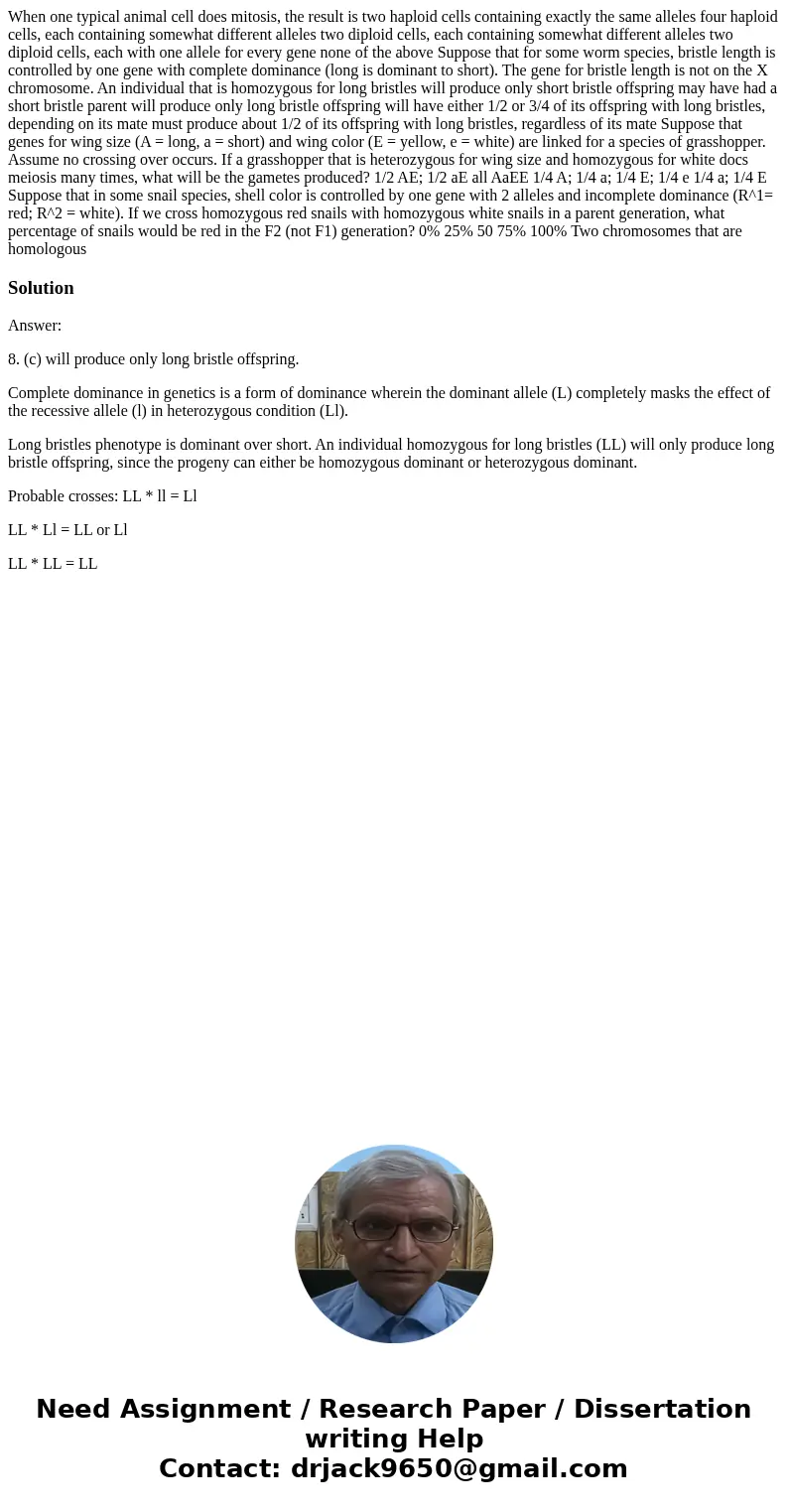When one typical animal cell does mitosis the result is two
When one typical animal cell does mitosis, the result is two haploid cells containing exactly the same alleles four haploid cells, each containing somewhat different alleles two diploid cells, each containing somewhat different alleles two diploid cells, each with one allele for every gene none of the above Suppose that for some worm species, bristle length is controlled by one gene with complete dominance (long is dominant to short). The gene for bristle length is not on the X chromosome. An individual that is homozygous for long bristles will produce only short bristle offspring may have had a short bristle parent will produce only long bristle offspring will have either 1/2 or 3/4 of its offspring with long bristles, depending on its mate must produce about 1/2 of its offspring with long bristles, regardless of its mate Suppose that genes for wing size (A = long, a = short) and wing color (E = yellow, e = white) are linked for a species of grasshopper. Assume no crossing over occurs. If a grasshopper that is heterozygous for wing size and homozygous for white docs meiosis many times, what will be the gametes produced? 1/2 AE; 1/2 aE all AaEE 1/4 A; 1/4 a; 1/4 E; 1/4 e 1/4 a; 1/4 E Suppose that in some snail species, shell color is controlled by one gene with 2 alleles and incomplete dominance (R^1= red; R^2 = white). If we cross homozygous red snails with homozygous white snails in a parent generation, what percentage of snails would be red in the F2 (not F1) generation? 0% 25% 50 75% 100% Two chromosomes that are homologous 
Solution
Answer:
8. (c) will produce only long bristle offspring.
Complete dominance in genetics is a form of dominance wherein the dominant allele (L) completely masks the effect of the recessive allele (l) in heterozygous condition (Ll).
Long bristles phenotype is dominant over short. An individual homozygous for long bristles (LL) will only produce long bristle offspring, since the progeny can either be homozygous dominant or heterozygous dominant.
Probable crosses: LL * ll = Ll
LL * Ll = LL or Ll
LL * LL = LL

 Homework Sourse
Homework Sourse